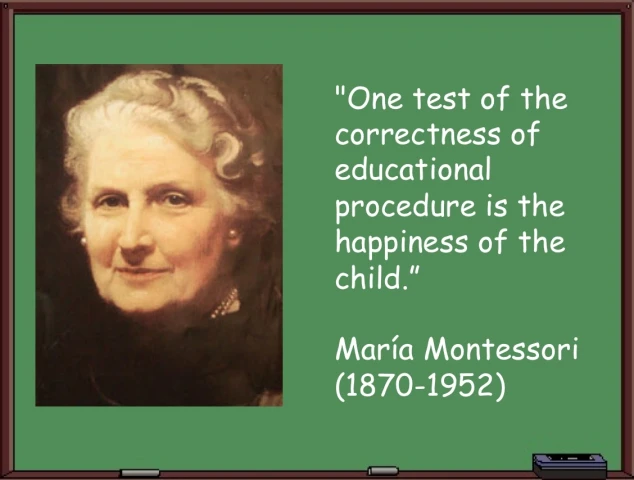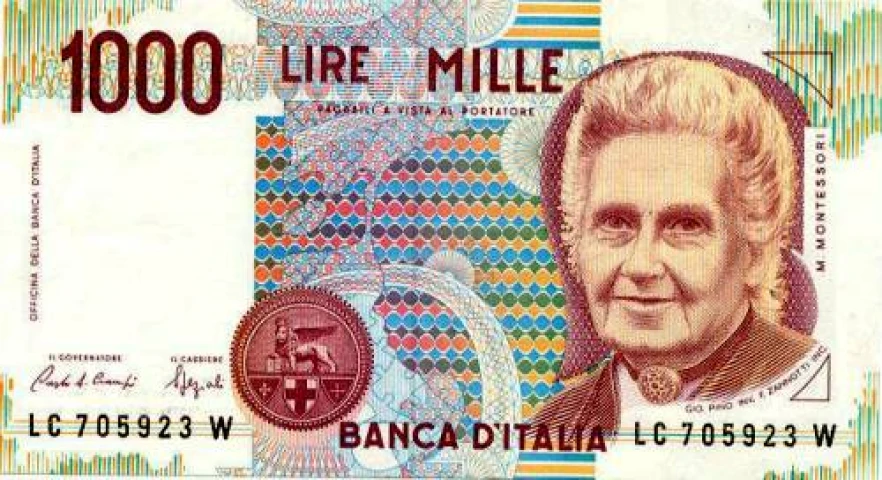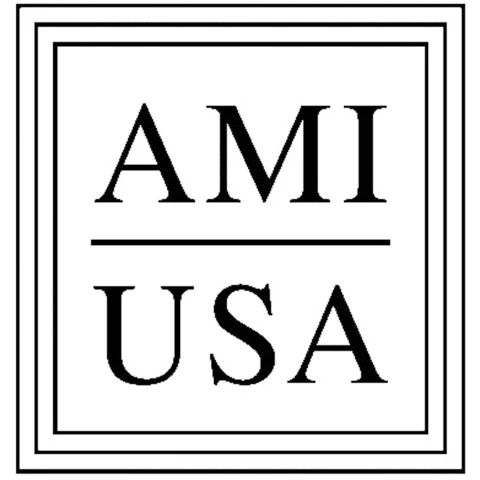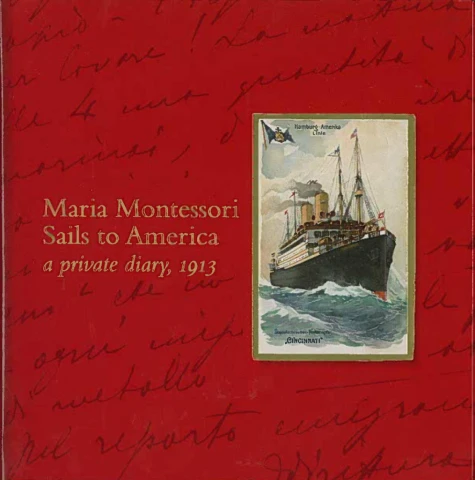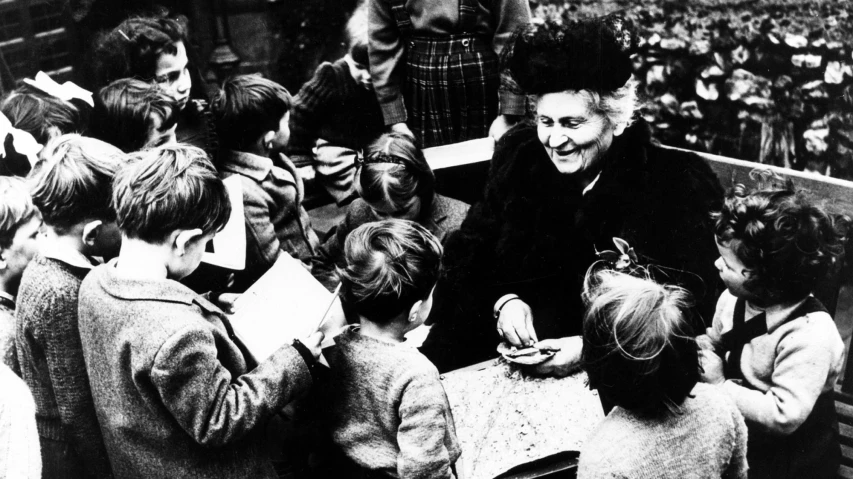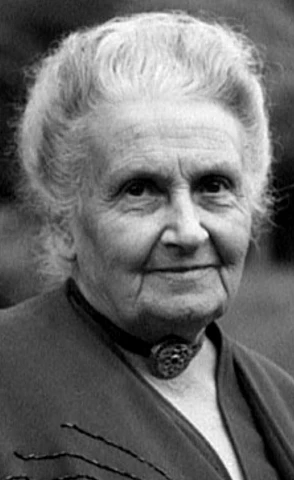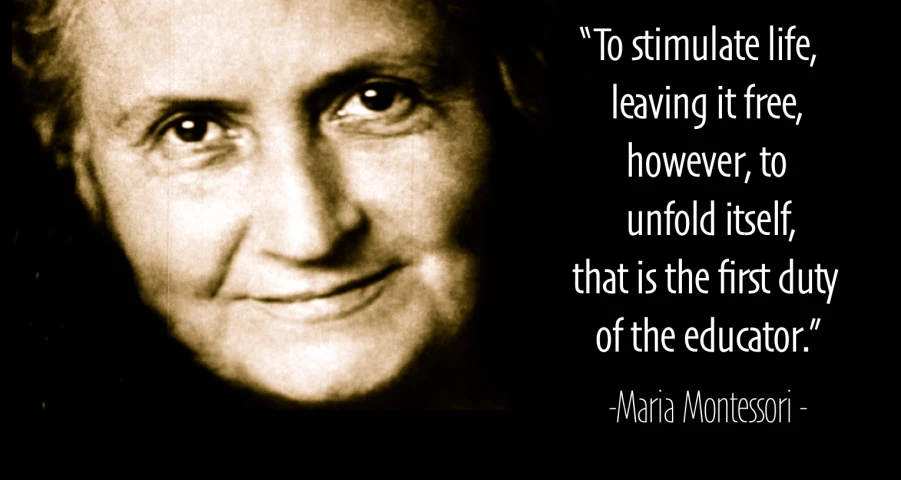We will never state that Italy has to teach something to the United States, or vice versa: on the contrary, we think that, by combining their cultures, societies, and economic inheritances, the two can achieve winning goals, together. Nevertheless, this interview shows how an Italian woman has taught something to the United States, applying a method she patented years ago, and which still runs and will continue to do so in the future.
The woman we are talking about is Maria Montessori, a woman who has made of teaching her life, becoming the educator par excellence. The Montessori method trained some of the most illuminating characters, making some of them not only notorious, but also rich and famous. Being raised as a Montessori pupil – though having less fame and money than many others – I am going to interview one of the main experts of the Montessori method, Erica Moretti, teacher and educator working in New England.
Erica, who was Maria Montessori, and why, is her story such a nice Italian experience to talk about?
Maria Montessori was an Italian teacher and educator born in 1870 in Chiaravalle, Marche, who moved to Rome at the age of five. She began working very soon, raised in the international, cosmopolitan scene of Rome, where she studied medicine, and where she became one of the first women-doctors in the country.
Her career changed right after graduating. Coordinating a project in San Lorenzo, a very disadvantaged area of Rome, she began working with very unfortunate children. It is in this circumstance that Montessori began applying her method, which gave her incredible success and immediate results.
From San Lorenzo and Rome, the Montessori method gradually spread throughout Italy, and then, more slowly, throughout the world.
A few years ago, someone talked about the "Montessori Mafia". Apart from the common link "Italy-mafia" - we would gladly get rid of – we read that the Wall Street Journal wrote about successful Montessori people, who founded Google and Wikipedia, Amazon and "The Sims". What does this method consist of?
Montessori method's main points are:
First of all, the Montessori method is characterized by mixed-age classes: 0-3, 3-6, 6-12, 12-18. In this way, the pupils are encouraged to socialize and cooperate among peers. The pupil is at the center of the educational path, which is strictly individual and tightly linked to his/her own subjectivity. Therefore, a Montessori pupil fairly plays his/her own activities, employing the time s/he personally needs, according to his/her personal rhythms.
The activities we are talking about include several options, which are assigned by the teacher who draws from a precise Montessori material. This is protected by copyright and it is strictly referential to what Maria Montessori studied and developed throughout her life, respecting her interests and passions.
Moreover, the Montessori method is characterized by specific time-blocks: they are long and without breaks, usually lasting three hours. In these sessions, the pupil is free to pick the material s/he wants, taking the ideal time s/he needs. Among these activities, some are designed to discover the personal inner attitudes.
Regarding the "Montessori-Mafia" article, I think it is an interesting point, as the method is widely spreading throughout the United States. At the moment, there are many associations sponsoring it, as it proposes a valid substitution to some American educational methods. After the 1990s, and the American educational crisis, the American families have begun to look for more 'student-centered' programs, and over the new charter and the accelerated schools, the Montessori method has become, since the early 2000, one of the most accredited educational systems.
You are currently working on a paper about the spreading of the Montessori method, can you give us a preview?
The several associations sponsoring the Montessori method are being successful, as long as it achieved incredible acclaim and reverberation throughout the United States.
I worked a lot with the NCMPS – National Center for Montessori in the Public Sector – a very interesting association that seeks to gather and unify the American Montessori Society and the AMI (Association Montessori International) in order to create an international lobby which may increasingly sponsor the method in the United States. In this way, more people would have access to Montessori schools and to the scholarships issued by many foundations, such as the William and Flora Hewlett Foundation, or the Melinda and Bill Gates Foundation, which sponsor student-oriented educational programs.
Not so long ago, it was founded the Montessori Leaders Collaborative, an association gathering together all the people interested in the Montessori method in the United States, and which is winning great grants to make it public and available on a wider scale. The fact that the Montessori method is a trend for those well-off families living in New York – or anywhere - is nowadays given for granted; however, what we are trying to do is to make the method available and accessible to everybody, reaching the public schools and the interest of the researchers, who should study the system and validate it. But this is gradually happening. In fact, the "Montessori Mafia" mentioned a series of articles demonstrating the effectiveness of the method in public contexts, although it did it with the common idea that what comes from Italy is usually linked to mafia.
Anyways, the principles of the Montessori method are always the same, and there is a great attention – especially by the AMI – to keep them authentic and valid. However, there are other associations that are trying to develop the method in order to conform it to the new society and its needs, such as the North American Montessori Teachers' Association and the American Montessori Society.
Among the studies I am carrying out, I got fascinated by the fact that a method invented in the outskirts of Rome in the 1900s could be applied upon many other cases in the world, in the United States for example, and this is one of the points I raised to the leaders of the Montessori Leaders Collaborative. They are working hard with an association run by Maria Montessori's niece Remilde, who invented "Educateurs sans Frontieres", a project recalling the one of the Doctors Without Borders, aimed at spreading the method in those unfortunate areas suffering from natural or war disasters. Starting from this idea, we can easily see the Montessori method applied to the suburban areas of the States, which recall the ones where the educator worked in the 1900s.
Actually, Montessori began working with unfortunate children from Rome; however, the first experimentations in the United States (1911) involved some students from well-off Hudson River New York families. She personally got to New York City in 1913, and it was her first time. As one of the first women graduating in medicine, she received warm welcomes and honors, having great acclaims on newspapers and even from the presidential family, which sent President Wilson's daughter to greet her. We even know that the President himself confirmed his presence to one of her lectures, even though, in the end, it was the Minister of Education who eventually attended it. Montessori achieved so much acclaim to be invited to hold a lecture at the Carnegie Hall, where John Dewey, Director of the Teachers College of Columbia University and one of the main American educators, introduced her and her soon sold-out event.
There are many articles in which she describes her trip on board of the transatlantic "Cincinnati". In one of these, she states: "I am in first class, whereas the Italians in seek of fortune going to the United States, they are in third class." Some American newspapers even mentioned about her dark complexion, which was one of the main characteristics usually describing the Italian immigrants. Interestingly, it was exactly in 1913 that the highest number of Italians arrived in the United States.
One of the things we found particularly interesting is the role of the mother in this method, which reminds us of the general role this figure has in the Italian upbringing system...
Montessori was initially called to create an institute where keeping some children "busy", while the parents, mostly poor, were mainly at work. However, the main point was to keep them quite, avoiding to damage the new building, which had been just renovated. It was her, Montessori, who took advantage of this circumstance to start a pedagogical educational method, though San Lorenzo was poor and lacking of any resource.
In the first pages of the book "Il metodo Montessori" (The Montessori Method), 1909, we are told about the way the children acquired what she called the "grace of the movements" ("la grazia dei movimenti"). This signified the capacity to freely move into a didactic context, conveying a sense of grace, and totally respecting the classmates; a principle which began in class and that was then transported back home.
For instance, after learning about cleaning and washing the hands before and after a meal, the child returned home transferring the teaching, thus changing his/her attitude and yet the one of his/her family, having a wide, general positive improvement.
Therefore, Montessori insisted upon the necessity of a collaboration with the family – given for granted now, in 2016, but which was much more difficult back then, in the 1900s-. Thus, the mother was a focal point of the method, as she still is in the more contemporary experiments – i.e. the ones by the NCMPS – as she seems the one mediating between the class and the disadvantaged neighborhoods in which the method is being applied.
Were there particular relationships between Maria Montessori and the community of Italian immigrants living in the States?
At first, Montessori did not work a lot with the community of Italian-Americans. However, when she met Angelo Patri, one of the main Italian-American educators working in New York and particularly in the Bronx, her method permeated into these circles and began instructing some children belonging to the Italian-American community.
You are an Italian who studied in Italy and who has been teaching for 12 years Italian Language and Culture in the States. What are the main differences between the Italian and American primary educational systems?
America is huge, and inside the United States there are some very interesting methods I would use to raise my sons, even. For instance, in Brooklyn there are two schools which adopt the Reggio Emilia method; the Montessori method schools are a lot in New York, and hence it depends on the context. Even here, where I live, in the Pioneer Valley, Massachusetts, there are many and many Montessori schools.
In the American public schools the main focus is on scores and scorings. Some families, which are more oriented towards a more alternative education, more focused on their sons' creativity, they try to avoid this.
Therefore, it is difficult to talk about United States, as the educational programs and methods are many: the systems change depending on the district, whereas in Italy there is a uniform national program unifying the country. Therefore, a high-school program in Rome is exactly the same of one in Milan. This structure somehow unifies the education system.
Is there any element you would transfer from a system (Italian-American) into another, and vice versa?
In the United States there is a common sense of openness while experimenting new pedagogical methods: there is lots of interest and enthusiasm. There are many "think thank" which have observed and developed the Reggio Emilia method, for example, and this is interesting. Unfortunately, in Italy there is not the same openness towards new methods coming from abroad. Certainly, this comes from the fact that the U.S is a country made up of immigrants; therefore it should supposedly be more open to these changes...
Therefore, I wonder whether Italy may find or not advantageous an opening to new foreign educational innovations.
Non ci permetteremmo mai di dire che l’Italia deve insegnare qualcosa all’America, o viceversa: secondo noi di We the Italians è l’unione delle due culture, società, eredità ed economie che rendono vincente il connubio Italia/Stati Uniti. Tuttavia, questa intervista parla di come un’italiana abbia effettivamente insegnato qualcosa agli Stati Uniti, come attraverso il suo metodo lo faccia ancora oggi e lo farà sempre più in futuro.
Questa italiana era Maria Montessori, e il verbo “insegnare” è quello giusto, perché era una grande educatrice. Il suo metodo ha formato alcuni grandi geni del nostro tempo, ma da solo non è garanzia di diventare ricchi e famosi: anche il sottoscritto ha studiato alla Scuola Montessori ma non è certo equiparabile ai grandi leader di cui sotto scriveremo. Ringraziamo per questa intervista una delle più esperte conoscitrici del metodo Montessori, che insegna nel New England: Erica Moretti.
Erica, chi era Maria Montessori, e perché la sua è una storia italiana bella e importante?
Maria Montessori era un’educatrice italiana che nacque nel 1870 a Chiaravalle, nelle Marche, e si trasferì all’età di 5 anni a Roma con la famiglia. La Montessori iniziò a lavorare molto presto, dopo essere cresciuta in un ambiente romano e cosmopolita, aperto a influenze provenienti da tutto il mondo. Fu una delle prime donne a laurearsi in Medicina in Italia.
La sua carriera cambia pochi anni dopo la laurea, quando le viene affidato un progetto del quartiere di San Lorenzo, un quartiere svantaggiato alla periferia di Roma. Viene incaricata di tenere alcuni bambini particolarmente difficili: è qui che comincia a sperimentare il suo metodo educativo e vede risultati straordinari, arrivando poi a conquistare non solo l’Italia ma un po’ tutto il mondo.
Qualche anno fa ci fu chi parlò di “Montessori Mafia”. Detto che sarebbe bello che in America si finisse di usare il termine mafia quando si vuole accomunare qualcuno in base a qualcosa di italiano, all’epoca il Wall Street Journal evidenziò come i due fondatori di Google e i fondatori di Wikipedia, Amazon e del famoso videogioco The Sims avevano in comune l’aver studiato col metodo Montessori. In che consiste?
I punti caratterizzanti dell’approccio educativo Montessori sono cinque.
Il metodo Montessori è caratterizzato dalla presenza di classi di età mista: in una classe Montessori potrete trovare bambini dai 0 ai 3 anni, dai 3 ai 6, dai 6 ai 12, dai 12 ai 18. In questo modo i bambini sono stimolati alla socializzazione, alla cooperazione e all’apprendimento tra pari. Il bambino è al centro del percorso educativo, che è un percorso autonomo e legato alla sua soggettività. Quindi i bambini svolgono le attività del metodo Montessori secondo il loro ritmo personale, impiegando il tempo a loro necessario.
Queste attività sono una gamma di opzioni e sono predisposte dall’insegnante all’interno della classe: questa è una caratteristica molto importante del metodo Montessori perché il bambino utilizza il materiale Montessori, che è protetto da copyright essendo stato disegnato e concepito da lei stessa nel corso della propria vita, seguendo il proprio sviluppo e i propri interessi, e questa è la parte chiave.
Il metodo Montessori è anche caratterizzato da blocchi di orario didattico: sono blocchi lunghi e senza interruzioni, idealmente di circa 3 ore, all’interno dei quali il bambino è libero di scegliere il materiale che vuole e per il tempo che crede. Nell’ambito di queste attività predisposte ci sono, ad esempio, laboratori in cui ogni attività favorisce l’apprendimento e la scoperta delle proprie predisposizioni interne.
Per quanto riguarda l’articolo “Montessori Mafia”, sicuramente è un discorso interessante perché il metodo si sta sviluppando moltissimo in America. Al momento ci sono molte associazioni che si stanno occupando di promuoverlo negli Stati Uniti affinché si ponga come un’alternativa forte rispetto alle varie opzioni educative statunitensi. La crisi dell’educazione statunitense degli anni ‘90 ha portato alla ricerca di diverse alternative soluzioni. Da una parte, negli anni ’90 si sono sviluppate le charters school, le accelereted school, e Montessori è diventata dagli inizi del 2000 una vera e propria opzione per tutti i genitori che vogliono che i propri figli seguano un modello che sia student-centered: insomma per le famiglie che ritengono che al centro del processo educativo ci sia il bambino e non un insegnante o il raggiungimento di determinati obiettivi didattici.
Tu stai lavorando ad un paper sulla diffusione del metodo Montessori negli Stati Uniti. Ci puoi anticipare qualcosa?
Le iniziative delle varie associazioni che sviluppano il metodo Montessori hanno avuto successo, perché il metodo Montessori sta crescendo in maniera esponenziale negli ultimi anni negli Stati Uniti.
Io ho lavorato molto con il NCMPS - National Center for Montessori in the Public Sector: un’associazione molto interessante che cerca di riunire la American Montessori Society, la AMI (Association Montessori International) per creare una lobby che sponsorizzi sempre di più il metodo Montessori negli Stati Uniti, garantendo l’accesso alle scuole Montessori ai fondi messi a disposizione da grandi fondazioni come La William and Flora Hewlett Foundation o la Melinda and Bill Gates Foundation, che appunto sostengono lo studio di metodo educativi incentrati sul bambino.
E’ stata fondata da poco un’associazione che si chiama Montessori Leaders Collaborative che ha messo insieme tutte le persone che si interessano di Montessori negli Stati Uniti e che sta portando il metodo Montessori a vincere grandi grants di modo che se ne possa studiare l’applicazione negli Stati Uniti, soprattutto nelle scuole pubbliche. E’ questa la parte che interessa di più: il fatto che il metodo Montessori venga insegnato in un quartiere abbiente di New York è un trend già sviluppato, in cui c’è tradizione. Quindi il metodo Montessori nella classe media americana è riconosciuto, ricercato ... tutte le famiglie middle class e di una certa estrazione culturale vorrebbero mandare i propri figli in una scuola dove si applica il metodo Montessori. Il problema è far arrivare questo metodo nel settore pubblico americano e far sì che ci siano sempre più studi che ne avvalorino i risultati didattici: e questo sta succedendo. Per esempio l’articolo che parla della “Montessori Mafia” seguiva una serie di articoli che dimostravano l’efficacia del metodo Montessori in contesti pubblici, anche se lo faceva con la solita caratterizzazione che vuole accostata la mafia a cose che vengono dall’Italia.
I principi fondamentali del metodo Montessori rimangono gli stessi e c’è una grande attenzione, in particolare dell’AMI, a mantenere l’autenticità dei principi del metodo; però, d’altra parte, altre associazioni come la North American Montessori Teachers' Association e la American Montessori Society portano avanti studi nuovi affinché il metodo Montessori possa essere adattato alle esigenze della società contemporanea.
Nei vari studi che sto facendo in questo momento, uno dei tempi per me più interessanti era quello di capire in che modo un metodo elaborato nel 1900 in un quartiere svantaggiato di Roma potesse essere applicato alla periferia di una città americana, ed è una delle domande che ho posto ai leader della Montessori Leaders Collaborative. Loro stanno lavorando moltissimo con un’associazione che nasce dal progetto della nipote della Montessori, Remilde Montessori, che si chiama “Educateurs sans Frontieres” e riprende il concettto dei Medici senza frontiere, nel tentativo di implementare il metodo Montessori in condizioni, zone e con popolazioni estremamente svantaggiate e colpite da catastrofi naturali o dalla guerra. A questo tema ci si può rifare per comprendere se e come portare il metodo Montessori in zone particolarmente difficili degli Stati Uniti che, curiosamente, in definitiva sono molto simili a quelle con cui la Montessori si è trovata a lavorare all’inizio.
In effetti la Montessori parte con questi bambini svantaggiati a Roma, però quando il metodo viene implementato negli Stati Uniti nel 1911 i primi a usufruirne sono i figli dell’aristocrazia newyorchese dell’Hudson River. Lei arriva a New York per la prima volta nel 1913. E’ una donna laureata in medicina e per questo viene accolta con grande onore: le maggiori testate americane danno la notizia, e ad accoglierla c’è la figlia del Presidente Wilson. Ad una reception sarebbe addirittura dovuto essere presente il Presidente, che però all’ultimo è sostituito dal Ministro dell’Educazione. Las Montessori tiene una lecture a Carnegie Hall, completamente sold-out, presentata da John Dewey, direttore del Teachers College della Columbia University, uno dei più importanti educatori degli Stati Uniti.
Ci sono articoli molto belli dove si descrive il suo viaggio sul transatlantico “Cincinnati”. Lei stessa ammette “io viaggio nella nave in I classe, mentre in III classe ci sono gli italiani che vengono a cercare fortuna negli Stati Uniti”. E alcune testate riportano che lei ha una pelle olivastra, una delle caratteristiche che servono ai media americani per descrivere solitamente con disprezzo gli emigrati italiani. E’ interessante pensare come proprio il 1913 sia l’anno con il maggior numero di arrivi di italiani negli Stati Uniti.
Ci ha colpito il ruolo della madre nel metodo, che richiama a quello in generale nell’educazione dei bambini italiani...
La Montessori venne chiamata a creare un istituto che doveva semplicemente tenere i bambini “occupati” durante il giorno mentre i genitori erano al lavoro: la preoccupazione principale era che i bambini potessero rovinare il palazzo che era stato da poco ristrutturato. Fu la Montessori a trasformare questa opportunità nell’invenzione di un metodo di insegnamento pedagogico, nonostante San Lorenzo fosse un quartiere con scarsissime risorse.
Nelle prime pagine del libro “Il metodo Montessori” che venne pubblicato nel 1909, si racconta come i bambini acquisissero ciò che lei chiamava la “grazia dei movimenti”, cioè la capacità di muoversi all’interno di un ambiente didattico con una tale grazia e attenzione e rispetto dei compagni da permettere loro di trasportare queste caratteristiche anche a casa: ad esempio l’attenzione alla pulizia, perché veniva chiesto loro di lavare le mani prima di pranzo e dopo pranzo. Tutti questi cambiamenti del bambino riuscivano a penetrare all’interno della famiglia e a portare un cambiamento positivo all’interno di essa.
Quindi la Montessori parlava della necessità che la famiglia collaborasse al processo educativo: questo non è un concetto eccezionale nel 2016, ma lo era all’inizio dello scorso secolo. La madre era appunto fondamentale e negli esperimenti contemporanei, ad esempio quelli del NCMPS, si postula tale importanza come cruciale per l’implementazione del metodo Montessori in quartieri svantaggiati di modo che la famiglia stessa tragga benefici dall’insegnamento che il bambino ha in classe.
Ci furono rapporti tra Maria Montessori e la comunità italoamericana di allora?
La Montessori non lavorò molto con la comunità di italoamericani, all’inizio. Poi però conobbe Angelo Patri, l’educatore italoamericano che aveva un ruolo fondamentale nel dibattito pedagogico di inizio secolo a New York e fu direttore di numerose scuole nel Bronx, a maggioranza frequentate da bambini di origini italiana. Dopo questo incontro Patri iniziò ad introdurre alcuni principi alla base del metodo Montessori nell’educazione di numerosi bambini appartenenti alla comunità italoamericana.
Tu sei un’italiana che ha studiato in Italia e ora insegna da 12 anni lingua e cultura italiana negli Stati Uniti. Quali sono le principali differenze tra l’educazione primaria che ricevono i bambini italiani e quelli americani?
L’America è immensa, e all’interno dell’America conosco molto bene realtà dove ci sono metodi educativi interessantissimi e io stessa ci manderei i miei figli. Per esempio a Brooklyn ci sono due scuole che adottano il metodo di Reggio Emilia, le scuole Montessori nella città di New York sono innumerevoli, quindi dipende un po’ dal contesto. Anche qui dove abito ora, nella Pioneer Valley in Massachusetts ci sono moltissime scuole Montessori.
Nelle scuole pubbliche degli Stati Uniti c’è una grande enfasi sui risultati dei test e questa è una cosa che molti genitori interessati ad una crescita alternativa, più incentrata sullo sviluppo della creatività dei propri figli, cercano di evitare.
E’ difficile parlare di Stati Uniti perché le proposte educative sono tante: l’offerta educativa cambia moltissimo tra un distretto scolastico e l’altro. In Italia invece c’è un sistema nazionale e quindi i programmi scolastici del liceo a Roma sono gli stessi di quelli di Milano e questo in qualche modo unifica il sistema.
Esiste qualcosa che a tuo avviso si potrebbe trasferire da un modello all’altro, e viceversa?
Negli Stati Uniti c’è molta apertura nel provare metodi pedagogici diversi: c’è molto interesse ed entusiasmo. Ci sono stati diversi think thank che hanno guardato allo sviluppo del metodo Reggio Emilia negli Stati uniti e questo è molto interessante. In Italia purtroppo invece non c’è molta apertura verso la sperimentazione di metodi che vengono dall’estero. Certamente questo viene dal fatto che gli Stati Uniti sono un Paese di emigrati, quindi più aperto mentalmente a questo tipo di novità; e mi chiedo se l’Italia non potrebbe beneficiare dall’aprirsi ad interessanti innovazioni che vengono da altri Paesi.


